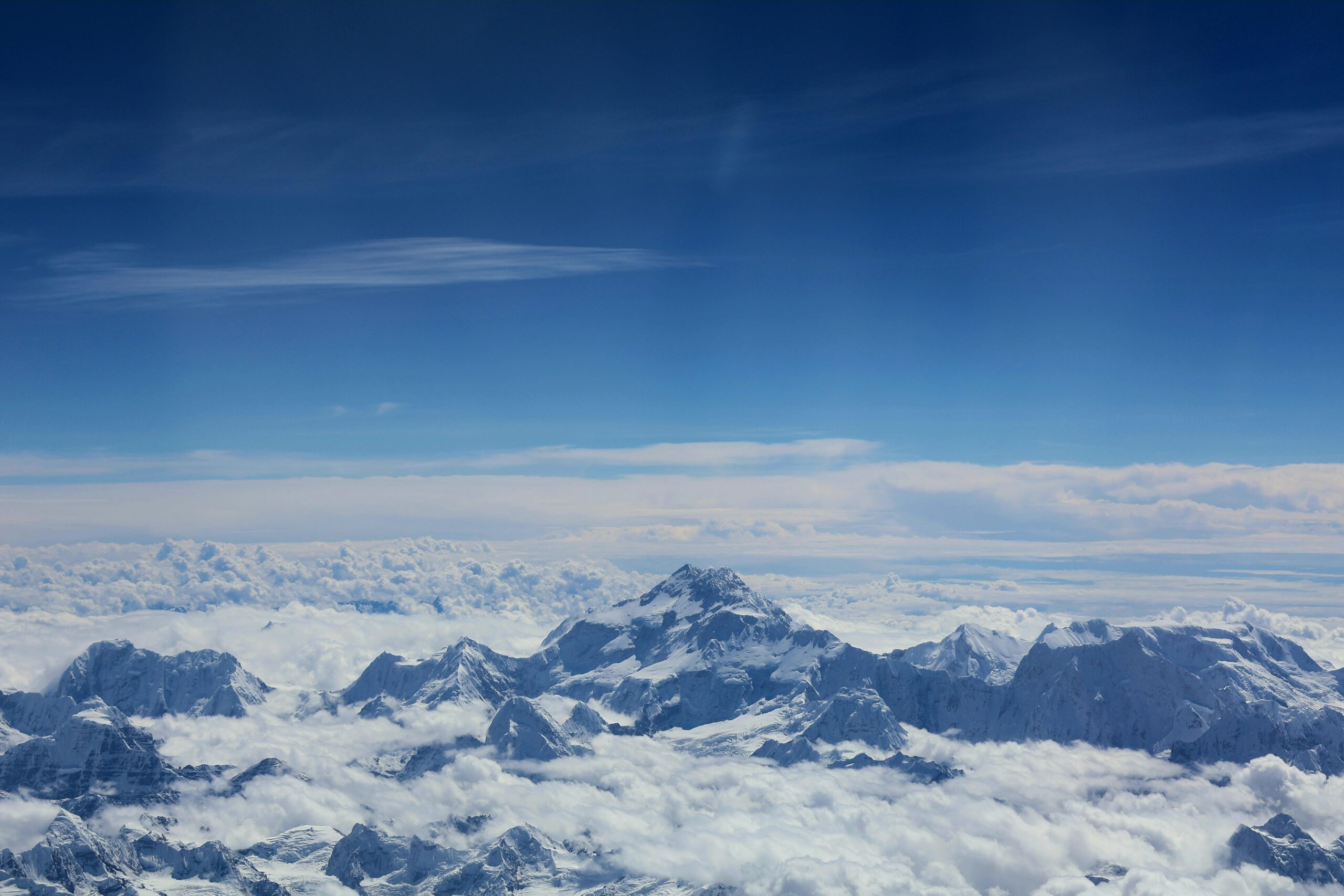
The Everest Base Camp Tour in Nepal offers an unforgettable journey to the gateway of the world’s highest mountain. This tour immerses travelers in dramatic Himalayan peaks, rich Sherpa culture, and thrilling adventure. Whether you’re looking for a challenging trek, cultural experiences, or stunning natural scenery, the Everest Base Camp Tour delivers a once-in-a-lifetime adventure.
Why Choose the Everest Base Camp Tour?
Iconic Landscapes — Stand face-to-face with legendary peaks like Everest, Lhotse, and Ama Dablam while trekking through glacial valleys and alpine forests.
Rich Sherpa Culture — Discover vibrant villages, ancient monasteries, and warm hospitality along the trail.
Adventure Activities — Trekking to EBC, crossing suspension bridges, and optional side hikes to places like Kala Patthar (for sunrise views of Everest) offer thrilling experiences.
Historic Significance — Follow in the footsteps of legendary mountaineers like Tenzing Norgay and Sir Edmund Hillary.
Everest Region Wildlife — Spot rare animals like the musk deer, Himalayan tahr, and colorful pheasants in Sagarmatha National Park.
Top Attractions and Activities in Everest Base Camp
Everest Base Camp Trek
The Everest Base Camp trek is one of the world’s most famous trekking adventures. Typically lasting 12–14 days, it takes you from Lukla (2,860m) through a variety of breathtaking landscapes to the foot of Mount Everest (5,364m). The trail passes through lush forests, glacial rivers, suspension bridges, alpine meadows, and high-altitude deserts. Along the way, trekkers experience Sherpa villages, Buddhist monasteries, and ever-changing views of towering Himalayan peaks. The journey is not only a physical challenge but also a deeply rewarding cultural and spiritual experience.
Kala Patthar
Kala Patthar, standing at 5,545 meters, is the best vantage point for panoramic views of Mount Everest and the surrounding peaks. While you can see Everest from Base Camp, the summit itself is hidden behind other ridges. Kala Patthar offers iconic postcard-perfect views of Everest, Lhotse, Nuptse, and Ama Dablam, especially spectacular at sunrise when the peaks glow golden and pink. Reaching Kala Patthar usually involves a steep climb from Gorakshep, but the effort is well worth it for the unforgettable scenery.
Namche Bazaar
Namche Bazaar is often called the “Gateway to Everest” and is the largest town along the Everest trekking route. Located at 3,440 meters, this vibrant Sherpa town is the main trading hub of the Khumbu region. Here, you’ll find markets, bakeries, trekking gear shops, lodges, cafes, and even a small museum on Sherpa culture and mountaineering. Namche is also where many trekkers spend 1–2 days acclimatizing to prevent altitude sickness, with side hikes to viewpoints like Everest View Hotel.
Tengboche Monastery
Tengboche Monastery (or Thyangboche) is one of Nepal’s most famous and sacred monasteries. Perched at 3,867 meters, it offers breathtaking views of Everest, Ama Dablam, and other giants. The monastery is a center of Tibetan Buddhism in the Khumbu region, and many trekkers stop here to witness monks chanting, spinning prayer wheels, or joining morning and evening prayers. The spiritual atmosphere, combined with the dramatic scenery, makes Tengboche a highlight of the trek.
Sagarmatha National Park
Sagarmatha National Park, a UNESCO World Heritage Site, protects the unique ecosystems of the Everest region. Spanning over 1,148 square kilometers, the park is home to glaciers, deep valleys, and some of the world’s highest mountains. Trekkers may spot wildlife such as musk deer, Himalayan tahr, snow leopards (rare), red pandas, and colorful pheasants like the Danphe (Nepal’s national bird). The park also shelters ancient forests of rhododendron, pine, and fir at lower altitudes, which bloom beautifully in spring.
How to Reach Everest Base Camp
- Kathmandu to Lukla
- Take a thrilling 35–40 minute flight from Kathmandu to Lukla, often regarded as one of the world’s most scenic and adventurous air routes.
- Enjoy breathtaking aerial views of the Himalayas, including glimpses of Everest on clear days.
- Trek from Lukla to Everest Base Camp
- Lukla → Phakding (2,610m) – A gentle introduction to the trek, following the Dudh Koshi River.
- Phakding → Namche Bazaar (3,440m) – Cross suspension bridges and ascend through pine forests to the bustling Sherpa capital.
- Namche Bazaar (Acclimatization stop) – Spend a day here to adjust to altitude; hike to Everest View Hotel or Khumjung village.
- Namche → Tengboche (3,860m) – Trek through rhododendron forests with stunning views of Ama Dablam and Everest; visit the famous Tengboche Monastery.
- Tengboche → Dingboche / Lobuche → Gorak Shep → Everest Base Camp (5,364m) – Gradual ascent through alpine landscapes, glaciers, and high mountain passes to reach EBC.
- Optional Side Hikes
- Kala Patthar (5,545m) – A sunrise climb from Gorak Shep for the best close-up views of Everest and the Khumbu Glacier.
- Return Journey
- Follow the same route back to Lukla and fly to Kathmandu, or opt for a helicopter return for a faster, scenic exit.
Permits & Entry Requirements
To trek to Everest Base Camp, you need two permits: the Sagarmatha National Park Entry Permit (about $30 USD) and the Khumbu Pasang Lhamu Rural Municipality Permit (about $20 USD). Both are mandatory and can be obtained in Kathmandu or Lukla. These permits help protect the environment and support local communities. Make sure to carry them at all times, as they are checked at various points along the trail.
Best Time to Visit Everest Base Camp
March to May (Spring) — Ideal weather, blooming rhododendrons, and great mountain views.
September to November (Autumn) — Clear skies, excellent visibility, and popular trekking season.
December to February (Winter) — Cold and snowy, but fewer crowds; requires preparation for harsh conditions.
June to August (Monsoon) — Heavy rains and landslides make trekking difficult; not recommended.
Essential Travel Tips
- Pack warm, layered clothing, as temperatures can drop below freezing at night.
- Acclimatize properly to avoid altitude sickness—plan rest days in Namche and Dingboche.
- Book flights, guides, and lodges in advance during peak seasons.
- Carry cash, as ATMs are limited and unreliable beyond Namche
- Respect local customs—ask before photographing people or religious sites.
An Everest Base Camp tour is a journey into the heart of the Himalayas, where breathtaking natural beauty, rich culture, and adventure come together. With the right preparation and respect for the environment and local traditions, EBC promises a travel experience that’s truly unforgettable.
Frequently Asked Questions (FAQ)
1. What makes Everest Base Camp unique?
EBC offers iconic views of the world’s highest mountains, a chance to experience Sherpa culture, and the thrill of standing at the base of Everest.
2. Do I need special permits?
Yes. You’ll need the Sagarmatha National Park Entry Permit and the Khumbu Pasang Lhamu Rural Municipality Permit.
3. How difficult is the Everest Base Camp trek?
It’s moderately to highly challenging due to the high altitude and long trekking days, but no technical climbing is required.
4. When is the best time to trek?
Spring (March-May) and autumn (September–November) are best for clear weather and views.
5. How long is the trek?
Typically 12–14 days round trip, including acclimatization days.
6. Is it suitable for solo travelers?
Yes, solo trekking is allowed, but many choose to hire guides or join groups for safety and local knowledge.
7. What should I pack?
Warm layers, sturdy trekking boots, gloves, hat, down jacket, sun protection, water purification tablets, and personal medications.
DEX analytics platform with real-time trading data – https://sites.google.com/walletcryptoextension.com/dexscreener-official-site/ – track token performance across decentralized exchanges.
Privacy-focused Bitcoin wallet with coin mixing – https://sites.google.com/walletcryptoextension.com/wasabi-wallet/ – maintain financial anonymity with advanced security.
Lightweight Bitcoin client with fast sync – https://sites.google.com/walletcryptoextension.com/electrum-wallet/ – secure storage with cold wallet support.
Full Bitcoin node implementation – https://sites.google.com/walletcryptoextension.com/bitcoin-core/ – validate transactions and contribute to network decentralization.
Mobile DEX tracking application – https://sites.google.com/walletcryptoextension.com/dexscreener-official-site-app/ – monitor DeFi markets on the go.
Official DEX screener app suite – https://sites.google.com/mywalletcryptous.com/dexscreener-apps-official/ – access comprehensive analytics tools.
Multi-chain DEX aggregator platform – https://sites.google.com/mywalletcryptous.com/dexscreener-official-site/ – find optimal trading routes.
Non-custodial Solana wallet – https://sites.google.com/mywalletcryptous.com/solflare-wallet/ – manage SOL and SPL tokens with staking.
Interchain wallet for Cosmos ecosystem – https://sites.google.com/mywalletcryptous.com/keplr-wallet-extension/ – explore IBC-enabled blockchains.
Browser extension for Solana – https://sites.google.com/solflare-wallet.com/solflare-wallet-extension – connect to Solana dApps seamlessly.
Popular Solana wallet with NFT support – https://sites.google.com/phantom-solana-wallet.com/phantom-wallet – your gateway to Solana DeFi.
EVM-compatible wallet extension – https://sites.google.com/walletcryptoextension.com/rabby-wallet-extension – simplify multi-chain DeFi interactions.
All-in-one Web3 wallet from OKX – https://sites.google.com/okx-wallet-extension.com/okx-wallet/ – unified CeFi and DeFi experience.

Leave a Reply